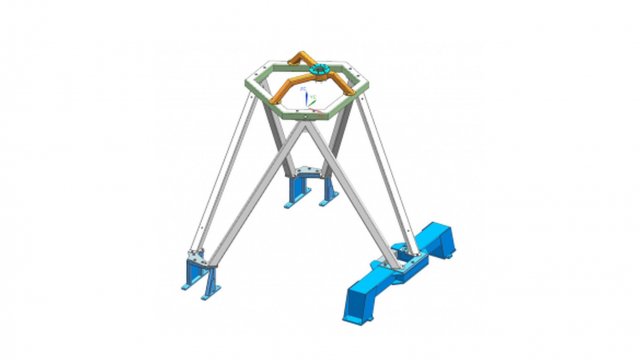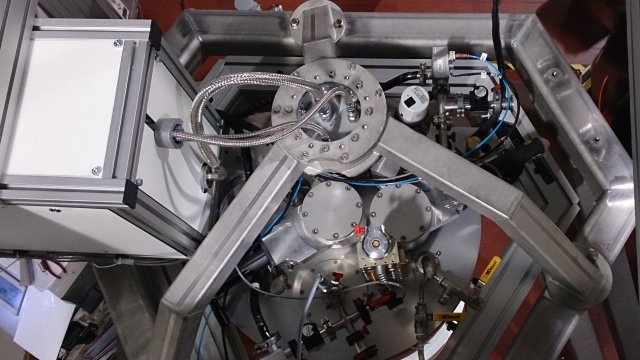
trillingisolatie through parallel frames

secundary frame

parallel primary and secundairy frame

simulation - secundary frame

top view hexagonal ring

cryostaat
Cryostats are used for physics experiments at very low temperatures, as carried out at Leiden University. These are cooling systems that can cool a system to near absolute zero (0.01 Kelvin).
For the first cooling step, a so-called pulse tube refrigerator (PTR) is used. Such a PTR uses a closed circuit of helium gas that is periodically compressed in the warm part of the system and then expanded in the cold parts of the PTR, which are located in the cryostat. This results in the release of vibrations.
For improved subatomic particle research at Leiden University’s Faculty of Physics, ACE was asked to design a construction that reduces the vibrations of the cryostat. A multidisciplinary team designed and realised a solution for vibration isolation with a double frame:
- a primary inner frame supporting the experiment; mechanically isolated from the outer frame,
- a secondary outer frame, parallel to the already existing frame with very high rigidity that supports the vibration-generating pulse tube cooler (PTR); this suppresses the vibrations.
The new secondary frame has a welded ring on top in which the pulse tube is mounted. In this way, the pulse tube is separated from the rest of the cryostat. The constructions are designed in such a way that the primary and secondary frames are mounted on different support beams and are mechanically completely independent of each other.
To close the vacuum chamber of the cryostat, there was still a need for a flexible but vacuum-tight connection between cryostat and pulse tube, in this case a rim-welded bellows. Due to the forces generated by the pulse tube and the desired reduction in vibration levels, the team determined that the frame and vacuum connection would need to meet the following requirements:
- frame rigidity pulse tube 1*E8 N/m
- bellows rigidity, lower than 1*E3 N/m
The project was carried out in a partnership of 7 parties including Hittech Multin, Innoseis, Leiden University and ACE. For more information we refer to the publication below.
downloads
Document